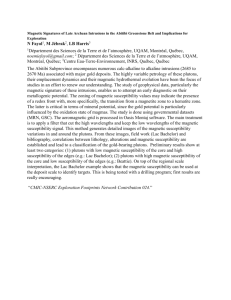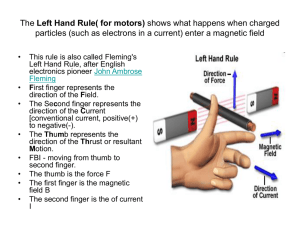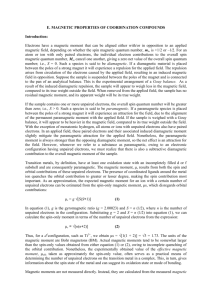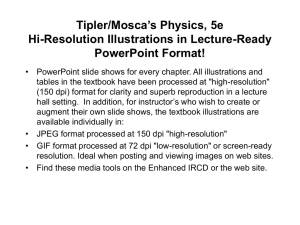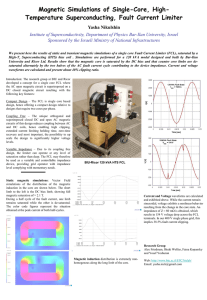Five Slides About Magnetic Susceptibility
advertisement
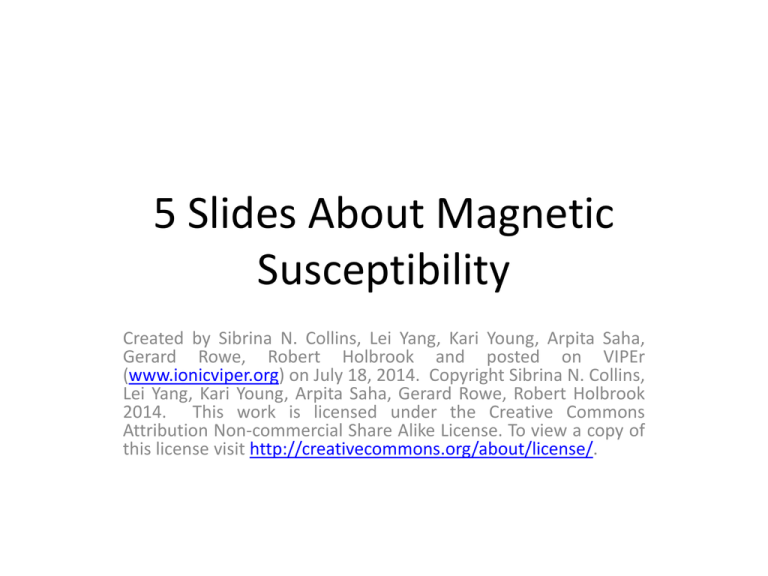
5 Slides About Magnetic Susceptibility Created by Sibrina N. Collins, Lei Yang, Kari Young, Arpita Saha, Gerard Rowe, Robert Holbrook and posted on VIPEr (www.ionicviper.org) on July 18, 2014. Copyright Sibrina N. Collins, Lei Yang, Kari Young, Arpita Saha, Gerard Rowe, Robert Holbrook 2014. This work is licensed under the Creative Commons Attribution Non-commercial Share Alike License. To view a copy of this license visit http://creativecommons.org/about/license/. Learning Goals • The student will gain hands-on experience evaluating the magnetic properties of a paramagnetic metal complex • The student will be able to calculate the magnetic moment (μeff) from the magnetic susceptibility (χM) of a sample • The student will learn and understand the connection between magnetic properties, unpaired electrons, oxidation state and ligand field strength Magnetic Susceptibility Source: http://en.wikipedia.org/wiki/Magnetic_susceptibility (accessed July 17, 2014) • What is magnetic susceptibility? • According to Wikipedia: – In electromagnetism, the magnetic susceptibility (latin: susceptibilis “receptive”) is a dimensionless proportionality constant that indicates the degree of magnetization of a material in response to an applied magnetic field. What does it tell us? • Magnetic properties gives information about the number of unpaired electrons for paramagnetic metal centers – Number of unpaired electrons • Oxidation state of metal center • Geometry of the metal center • Ligand field (crystal field) strength What exactly is magnetism? • Any moving electrical charge with spin and orbital angular momentum generates a magnetic field in a system. – The measurement of the magnetic response of a material to an applied magnetic field is known as susceptibility (c). – The magnetic materials are broadly classified into two categories • Diamagnetic (paired electrons, repelled by magnetic field) • Paramagnetic (unpaired electrons, attracted by magnetic field) How can we measure the magnetic susceptibility? • Various Methods – NMR Evans Method – Johnson-Matthey MSB-Auto Magnetic Susceptibility Balance – SQUID (Superconducting QUantum Interference Device) χM = Total Molar Magnetic Susceptibility μeff = Magnetic Moment, Bohr Magnetons (B.M.) n = number of paramagnetic centers NMR Evans Method • 1H NMR is a powerful tool for determination of magnetic susceptibility! – NMR tube • Sample solution • Capillary with pure solvent – NMR spectrum collected • NMR solvent in capillary (shifted peak) • NMR solvent in tube (reference peak) SQUID Method • Superconductive quantum interference device (SQUID) is comprised of two superconductors – separated by thin insulating layers to form two parallel Josephson junctions – The raw data is processed to obtain molar paramagnetic susceptibility (cM). Figure 2. SQUID Magnetometer (Photo courtesy of Professor George Christou) Johnson-Matthey MSB-Auto Magnetic Susceptibility Balance • A modified version of the Gouy balance – Measuring the force change on a compact magnet upon insertion of the sample. – Using raw data from balance, calculate mass susceptibility (cg) – cM is then calculated from: cM = cg M (M = Molecular Weight) Source: http://en.wikipedia.org/wiki/Gouy_balance (accessed July 17, 2004) Calculate Magnetic Moment! • Use the calculated cM to then calculate the magnetic moment (μeff) of the sample • Compare the calculated μeff for a given metal center with the literature – Is the result consistent with the oxidation state? – What is the geometry of the metal center?

